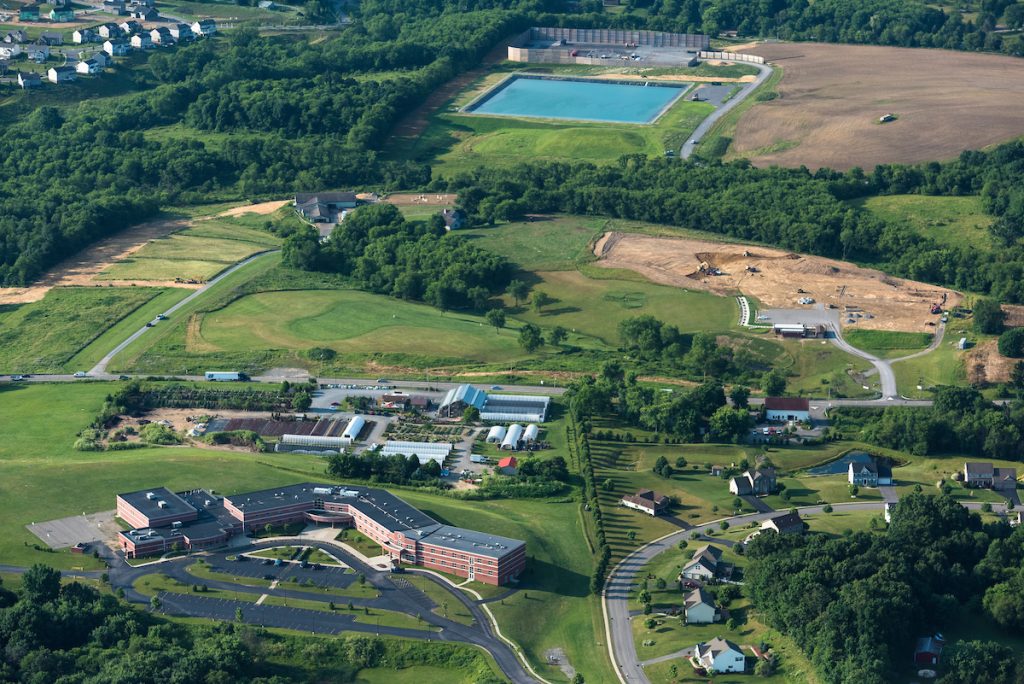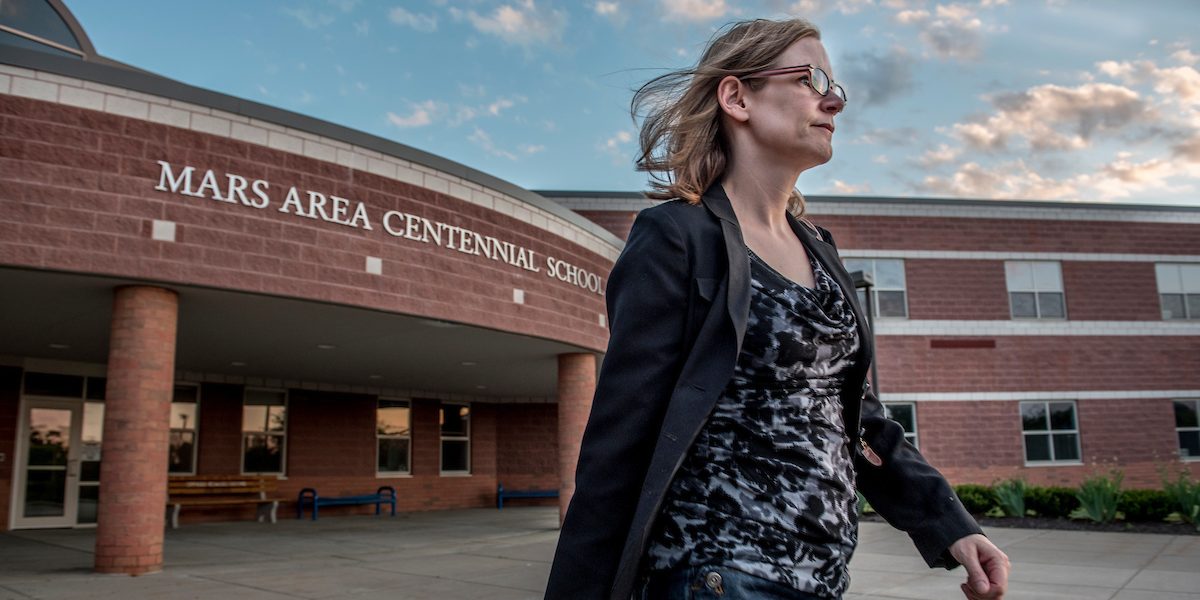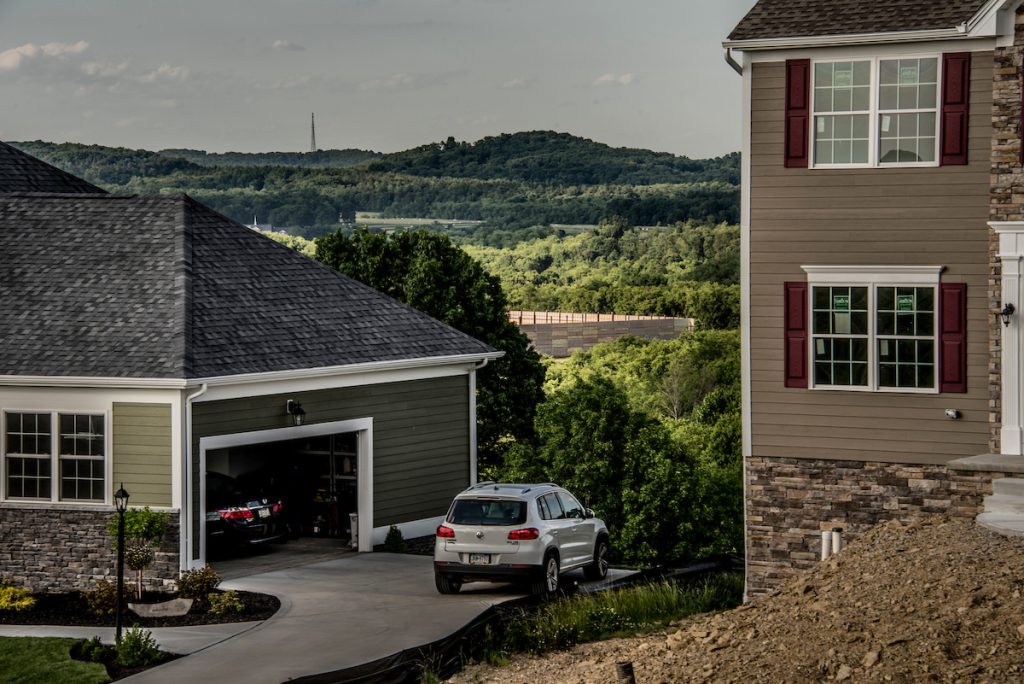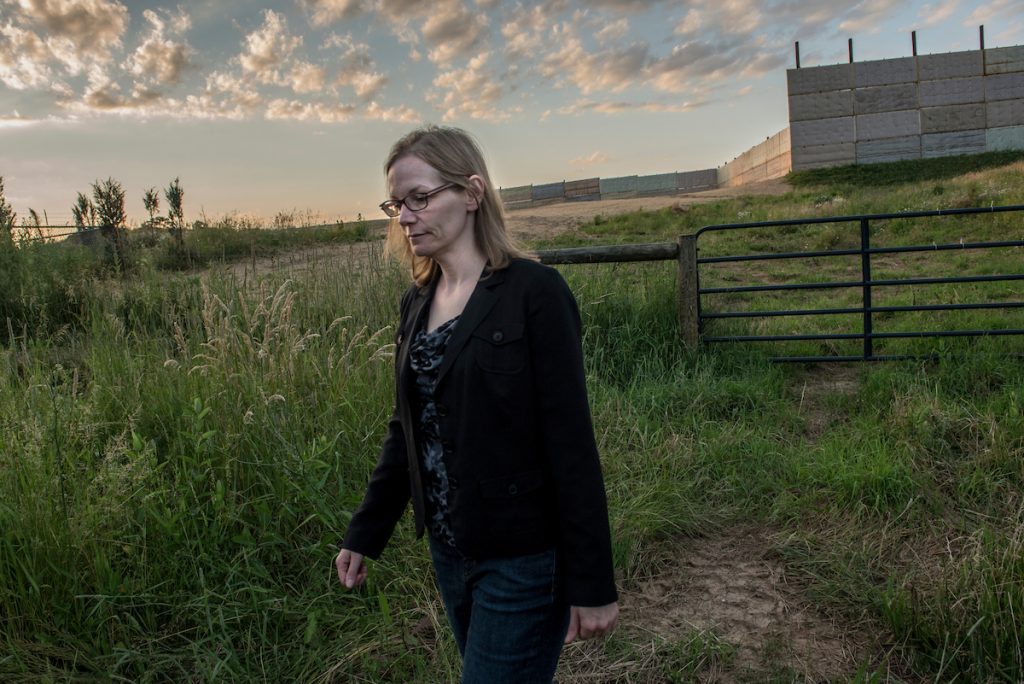Physician Diagnoses New Health Risk: Explosions at Drilling Sites
Marsha Haley, M.D., is a radiation oncologist at two of the University of Pittsburgh Medical Center hospitals. She’s also a concerned mother of a 10-year old.
Together, they live in a newer, suburban neighborhood in the Borough of Seven Fields, Butler County, PA. Her daughter attends the local elementary school, part of a five building K-12 campus very close to natural gas well pads. Over the past few years, as fracking operations crept closer to school property, Dr. Haley became more and more concerned about the proximity of wells to school children. It’s not easy to evacuate a school and Dr. Haley particularly was worried about blast zones should an explosion at a well pad occur.

At some point, she realized she could no longer stand by as her worries continued to grow. When a well was drilled 500 feet from another school in Southwestern PA, the absolute limit from a building allowed by Pennsylvania law, she knew she had to act. A serious, academic woman, tall, angular, and well-dressed, Dr. Haley chooses her words carefully.
Growing concern lead her to begin researching the science behind setting setback distances, which are meant to protect those working and living around oil and gas operations from potential explosions. “In truth,” she muses, “I got involved in this in a roundabout way.” She explains how a grassroots organization, Mars Parent Group, formed almost overnight, two years ago, when Rex Energy brought a proposal to the Mars school board to drill beneath school property. Parents organized, gathered hundreds of signatures in protest, and within days, according to Dr. Haley, emerged as the Mars Parent Group.
“I heard about a well pad fire in Ohio where firefighters were exposed to chemicals I was familiar with as a physician,” she says. Speaking from her sunroom, occasionally leaning forward to emphasize her point, she goes on to explain that the Ohio firefighters were exposed to a therapy-grade radioactive isotope that was found onsite in a fracking truck. “As a radiation oncology physician, that caught my interest,” she nods as she pets Gloria, her well-loved and pampered Shih Tzu. “Why would radioactive isotopes be in a fracking truck?”
Concerned about the isotopes as well as the dangerous chemicals used in fracking, she reached out to the parents who were then in the process of forming Mars Parent Group as well as those working with another parent-based group, Moms Clean Air Force. She felt other parents and concerned residents needed to hear her concerns regarding proposed oil and gas operations within her community.

According to Dr. Haley, radiation oncologists are required to carefully track every microcurie of radioactive material for the Pennsylvania Department of Environmental Protection (PA DEP). However, for years, fracking operators were permitted to dispose of hydraulic fracturing waste water at public sewage plants, which were not equipped to handle the chemical-laden, radioactive material. “It’s such a double standard,” she groans.
The more she delved into the practices of oil and gas operators, the more she became concerned about the lack of regulatory oversight, and what that meant for children in western Pennsylvania, many of whom are surrounded by oil and gas operations when on school grounds. “What if there’s a catastrophe at a well when school’s in session?” she charges. “It took 30 minutes to evacuate those poor kids in Sandy Hook. Would our kids have enough time?”
 It’s then that she decided to collaborate with other physicians and scientists to take a hard look at well setbacks. She wanted to know if setbacks in Pennsylvania and other states were, in fact, adequate to protect the public, particularly school children, from well explosions, fires, and well pollution.
It’s then that she decided to collaborate with other physicians and scientists to take a hard look at well setbacks. She wanted to know if setbacks in Pennsylvania and other states were, in fact, adequate to protect the public, particularly school children, from well explosions, fires, and well pollution.
This is crucial work given that a mapping tool released by Healthy Schools Pennsylvania and Women for a Healthy Environment shows that as of July 2015, 75 public schools have a total of 350 unconventional gas wells within a one-mile radius of a school building.
Essentially, Dr. Haley and her colleagues modeled blast zones, based on heat measurements, from an explosion at an average size wellhead. According to the modeling, a well fire at a 500 foot distance would inflict second degree burns within 30 minutes. The same intensity of heat can travel 200 to 250 feet in only 16 seconds. They also evaluated how far neurotoxic sulfide gases and cancer-causing benzene travel from a well, and these substances are in many cases present above health-based risk levels within state setback distances.
The peer-reviewed paper, which was published online in February, has gotten the attention of politicians and the media alike. “Some townships want help,” Dr. Haley explains. “They want to write protective ordinances.” This may be in part because Dr. Haley’s worst fears came true when in May, a 26-year old man from Salem Township, Westmoreland County, PA sustained life-threatening burns as a result of a pipeline explosion. At home when the blast occurred, he ran from the house to escape the roaring heat but there wasn’t enough time. He was seen running down the street as his clothes and body combusted.
Although some localities, such as nearby Peters Township, have invited her to make presentations, others view this research with disdain. Some local officials have even had industry scientists prep them in order to publicly contest the research paper’s findings during public meetings. “But even town officials who want to do the right thing are afraid of what will happen,” she sighs. “Local supervisors worry that industry lawyers will sue them – that’s why it’s so hard, even when they want to make safe decisions for their community.”
But all is not lost. Some communities are getting the message and people in western Pennsylvania and other states are paying more attention to setbacks, especially when wells are located near schools. Dr. Haley also emphasizes that groups such as Mars Parent Group, Moms’ Clean Air Force, Southwestern Environmental Health Project, and the Environmental Integrity Project, are working hard to change the dynamic. They’re tracking infrastructure proposals, educating the public, and watching out for permits. Above all else, they’re making sure residents know that they can’t afford to sit back complacently and assume that PA DEP and their elected local leaders are making correct, protective decisions.
 More recently, Dr. Haley was asked to testify before a state senate committee regarding a proposal to frack in the Lake Erie watershed. As a result, state Senator Sean Riley has proposed a fracking moratorium for the entire watershed, a sensitive ecosystem where groundwater flows into Lake Erie.
More recently, Dr. Haley was asked to testify before a state senate committee regarding a proposal to frack in the Lake Erie watershed. As a result, state Senator Sean Riley has proposed a fracking moratorium for the entire watershed, a sensitive ecosystem where groundwater flows into Lake Erie.
Dr. Haley is one mom taking action to protect her daughter and all the other children who may be exposed to oil and gas activities near their schools. She is the proverbial lioness protecting all the young and many are grateful for her efforts. Her research has brought much needed science to the important issue of how close is too close to schools.
Her report, entitled Adequacy of Current State Setbacks for Directional High-Volume Hydraulic Fracturing in the Marcellus, Barnett, and Niobrara Shale Plays, can be found at: http://ehp.niehs.nih.gov/wp-content/uploads/advpub/2016/2/ehp.1510547.acco.pdf


